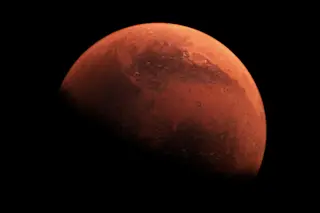The Mars Reconnaissance Orbiter has been sending images of the Red Planet home since 2006. In that time, it sent back spectacular photos of various rovers crawling across the surface, the Mars Phoenix lander parachuting towards the surface and numerous images of curious surface features that planetary geologists are keen to explain.
The spacecraft’s main camera, the High-Resolution Imaging Science Experiment (HiRISE), is capable of producing images with a resolution of 30 centimeters per pixel. That’s enough to resolve individual rocks on the surface and that capability has revealed some surprises.
One of these is a landscape covered in grooves that are reminiscent of the surface of the brain and of brain coral. That raises the question of how “brain coral” forms on Mars. Some geologists think it is clear evidence of the action of liquid water, but others say that other phenomena may also be responsible, such as sublimation.
...














